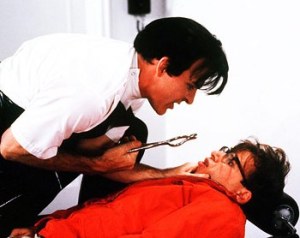You’d think that by now everyone’s seen enough movies to know that releasing thousands of flesh eating anythings into the wild is a bad idea, but apparently government officials in India aren’t watching the same films. Which is why they decided it would be a good idea to release 25,000 carnivorous turtles into their main waterway.
To be fair, it actually was a good idea. In many parts of India, the traditional death rituals involve cremating bodies then laying the ashes to rest in the Ganges River. Unfortunately the bodies often aren’t completely burnt. Without putting too fine a point on it, this results in people disposing of their well-done loved ones in the river by the thousands. If their relatives can’t afford cremation, as is often the case, the bodies are simply given to the river as is.
In addition to being used as a graveyard, the Ganges is also used for swimming, bathing, drinking and probably at least a few awesome water-skiing competitions – none of which go well with dead bodies. Putting aside the sheer ickiness factor, there are severe and obvious health risks involved. Corpse pollution, as it’s called, is an undeniable problem. At this point you can probably see where the flesh eating turtles come in.
The turtles, which used to inhabit the river in large numbers and helpfully dispose of bodies, were eventually thinned out by poachers who would hunt them for meat. The 25,000 strong replacement batch was bred on a nearby farm. In order to avoid becoming the ground zero of a low-budget horror flick, farmers took care to raise them on dead fish “so that they wouldn’t develop a taste for the living.”
The turtles grew up big and strong and were eventually released into the Ganges. And that’s when things immediately went wrong. After all the planning and foresight, they had overlooked one important factor: why they needed more turtles in the first place. They might as well have declared hunting season open. Turtles once again started getting poached in large numbers. These days they’re pumping over a thousand turtles a year into the Ganges, but they just keep getting hunted and the bodies in the river just keep piling up. Millions of dollars and countless turtles later, and they’re still no closer to solving the problem. It might be time for a plan B. Possibly something involving piranhas.
Source:











